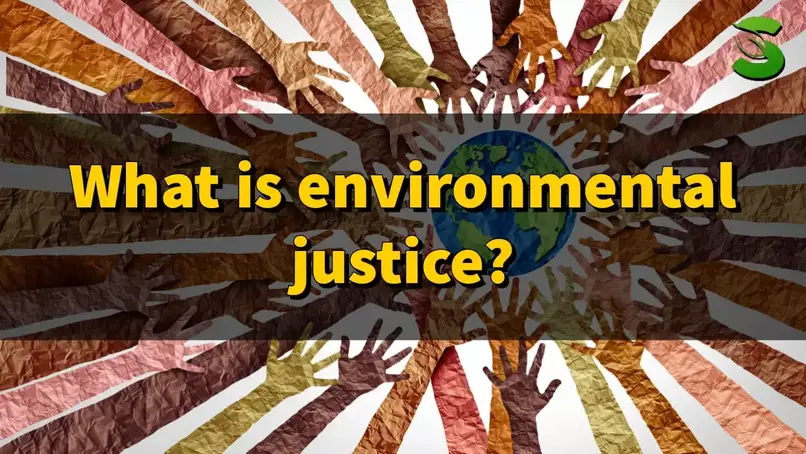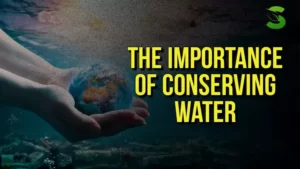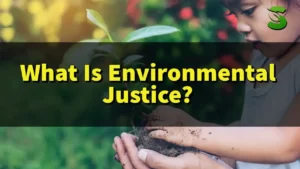Environmental justice is not just a concept; it’s a crucial aspect of creating a sustainable and equitable world. In this article, we’ll delve into why environmental justice is important, exploring its historical roots, global implications, and the transformative power it holds.
Defining Environmental Justice
Environmental justice, a term gaining increasing recognition and importance, is the embodiment of fairness and equity in the treatment of all individuals, irrespective of their race, class, or income. At its core, it is about ensuring that every person has an equal right to a healthy environment, free from the adverse impacts of environmental policies, regulations, and developments.
To truly grasp the significance of environmental justice, it’s essential to delve into its fundamental principles. This concept extends beyond traditional environmentalism, emphasizing the fair distribution of environmental benefits and burdens. It advocates for the right of all communities to participate in decision-making processes that affect their environment.
The journey of environmental justice is marked by evolution and growth. Initially rooted in grassroots movements, it has evolved to encompass legislative changes and policy frameworks that aim to rectify historical and systemic environmental injustices.
Equality and fairness stand as the guiding principles of environmental justice. These principles drive the creation of policies and initiatives that seek to rectify historical disparities in the distribution of environmental resources and risks.
In essence, the concept is a call to action to address environmental issues in a way that doesn’t disproportionately burden marginalized communities or leave them without a voice in environmental decision-making.
In the upcoming sections, we’ll explore why environmental justice is essential, examining its historical context, global impact, and the legal framework that supports its principles. Stay tuned to uncover the depth and significance of environmental justice in creating a more sustainable and equitable world.
Historical Context
Understanding the historical roots of environmental justice is crucial to appreciating its current significance. The concept has evolved over time, shaped by events, movements, and societal changes that have unfolded through the years.
Evolution of Environmental Justice
The roots of environmental justice can be traced back to the mid-20th century when marginalized communities, often low-income and predominantly people of color, began to raise their voices against environmental injustices. It was during the civil rights movement in the United States that the intersection of racial and environmental issues became more apparent.
Communities started recognizing that they were disproportionately bearing the burden of environmental hazards and pollution. Hazardous waste sites, landfills, and industrial facilities were often located in or near these communities, leading to severe health impacts.
Emergence of Grassroots Movements
The 1980s witnessed a significant shift as communities affected by environmental injustices mobilized into grassroots movements. They protested against discriminatory environmental policies and practices, demanding equal protection from environmental harm.
One landmark event was the protest against the siting of a hazardous waste landfill in Warren County, North Carolina, in 1982. This event is often cited as a catalyst for the environmental justice movement, highlighting the link between race, class, and exposure to environmental hazards.
Legislative Response
In response to the growing environmental justice movement, there were notable legislative milestones. In 1994, President Bill Clinton issued Executive Order 12898, requiring federal agencies to address environmental justice in minority and low-income populations.
Despite these positive steps, challenges persisted, and communities continued to fight against environmental injustices. The historical context underscores the ongoing struggle for equitable environmental protection and the need for comprehensive policies that address the root causes of disparities.
As we explore further, we’ll delve into the key principles that guide environmental justice and why it remains a critical aspect of our societal and environmental progress.
Key Principles
At the core of environmental justice lie key principles like equality and fairness. These principles guide policies and initiatives aimed at rectifying historical and systemic injustices in environmental decision-making.
Importance of Environmental Justice
Understanding the importance of environmental justice is paramount in addressing the systemic imbalances that persist in our societies. This section delves into why environmental justice is not just a noble concept but a fundamental necessity for creating a fair and sustainable world.
Addressing Disparities
One of the primary reasons why environmental justice is crucial lies in its role in rectifying historical disparities. Throughout history, marginalized communities have borne a disproportionate burden of environmental pollution and degradation. From toxic waste sites to air and water pollution, these communities often face severe health consequences due to their proximity to environmental hazards.
By focusing on environmental justice, we aim to correct these injustices, ensuring that no community is unfairly burdened by the negative environmental impacts of industrial activities, waste disposal, or other ecological hazards.
Environmental Racism
Environmental justice shines a light on the harsh reality of environmental racism. Certain communities, particularly those of color, have historically been subjected to environmental hazards at rates higher than the general population. This discrimination perpetuates social inequalities, emphasizing the interconnectedness of environmental issues with broader societal challenges.
By acknowledging and combating environmental racism, we take a step toward a more just and equitable future, where everyone, regardless of their background, can enjoy a clean and healthy environment.
Global Implications
The importance of environmental justice extends beyond national borders. Environmental issues are global, and their impacts reverberate around the world. Climate change, deforestation, and pollution know no boundaries. Therefore, addressing environmental injustices is not just a local concern but a global imperative.
Collaborative efforts on an international scale are essential to ensure that all communities, regardless of their geographic location, have equal access to environmental resources and protection from ecological harm.
Legal Framework
Environmental justice is reinforced by a robust legal framework that seeks to protect the rights of vulnerable communities. Laws and policies are in place to prevent discriminatory practices and ensure that environmental decision-making processes consider the well-being of all citizens.
By upholding and strengthening this legal framework, we reinforce the commitment to environmental justice, creating a foundation for fair and equitable environmental practices.
As we explore further, we will delve into specific examples and case studies that highlight the real-world impact of environmental justice initiatives. Stay tuned to witness the positive changes brought about by a commitment to fairness and equality in environmental matters.
Grassroots Movements
Grassroots movements play a pivotal role in the environmental justice landscape. These movements are driven by local communities coming together to address environmental issues affecting their daily lives. Whether it’s protesting against the construction of a polluting facility or advocating for cleaner air, grassroots movements empower individuals to be active participants in shaping their environmental future.
Reference: Bullard, R. D. (1990). Dumping in Dixie: Race, Class, and Environmental Quality. Boulder, CO: Westview Press.
Case Studies
Examining specific case studies provides tangible insights into the impact of environmental justice initiatives. From communities successfully fighting against environmental injustices to instances where challenges persist, case studies offer valuable lessons and inspiration for creating positive change on both local and global scales.
Reference: Mohai, P., Pellow, D., & Roberts, J. T. (2009). Environmental justice. Annual Review of Environment and Resources, 34, 405-430.
Intersectionality
Understanding the intersectionality of environmental justice is essential. Environmental issues often overlap with social and economic challenges. Recognizing these intersections helps create more comprehensive solutions that address the interconnected nature of injustices and work towards a more inclusive and equitable environmental framework.
Reference: Crenshaw, K. (1989). Demarginalizing the intersection of race and sex: A Black feminist critique of antidiscrimination doctrine, feminist theory and antiracist politics. University of Chicago Legal Forum, 139-167.
Health Implications
The environmental impacts on health are profound, especially in marginalized communities. Exposure to pollutants and hazardous waste can lead to severe health issues. Exploring the health implications of environmental injustices underscores the urgency of creating environments where everyone can live free from the threat of pollution-related health problems.
Reference: Morello-Frosch, R., & Shenassa, E. D. (2006). The environmental “riskscape” and social inequality: Implications for explaining maternal and child health disparities. Environmental Health Perspectives, 114(8), 1150-1153.
Economic Considerations
Environmental justice is not only a matter of ethics but also economics. Certain communities bear the brunt of environmental burdens, affecting their economic well-being. Examining the economic considerations tied to fair environmental practices sheds light on the broader societal impact of creating a level playing field for all.
Reference: Perman, R., Yandle, B., & Bhattarai, M. (2002). Natural resource and environmental economics. Upper Saddle River, NJ: Prentice Hall.
Educational Initiatives
Educational initiatives are crucial in raising awareness about environmental justice. From school programs to community workshops, these initiatives empower individuals with knowledge, fostering a sense of responsibility and engagement. Education becomes a catalyst for positive change, encouraging informed decisions and advocacy for environmental justice.
Reference: Schreurs, M. A. (2008). Environmental politics and policy in industrialized countries. MIT Press.
Government Role
Governments play a central role in shaping environmental policies and regulations. Examining the government’s role in addressing environmental injustices provides insight into the effectiveness of current initiatives and highlights the need for proactive measures to ensure fair and equitable environmental protection.
Reference: Bullard, R. D. (2005). The quest for environmental justice: Human rights and the politics of pollution. Sierra Club Books.
Future Prospects
The future of environmental justice holds both challenges and opportunities. Exploring future prospects involves envisioning sustainable solutions, technological innovations, and policy advancements that can lead to a more just and equitable environmental landscape for generations to come.
Reference: United Nations. (2015). Transforming our world: The 2030 Agenda for Sustainable Development. [Online] Available at: https://sdgs.un.org/2030agenda
Challenges and Criticisms
Like any concept, environmental justice is not without its challenges and criticisms. Examining these aspects fosters a nuanced understanding of the debates surrounding environmental justice and paves the way for constructive dialogue and improvement in future initiatives.
Reference: Schlosberg, D. (2009). Defining environmental justice: Theories, movements, and nature. Oxford University Press.
Success Stories
Celebrating success stories is integral to showcasing the positive impact of environmental justice efforts. From communities overcoming environmental challenges to policy changes that lead to positive outcomes, success stories inspire and motivate further action in the pursuit of environmental justice.
Reference: Pellow, D. N., & Nyseth Brehm, H. (2013). From ecological to environmental justice. Annual Review of Sociology, 39, 45-63.
Public Engagement
Individuals play a crucial role in the success of environmental justice initiatives. Exploring avenues for public engagement, whether through community activism, volunteering, or sustainable lifestyle choices, highlights the power of collective action in addressing environmental injustices.
Reference: Stedman, R. C. (2002). Toward a social psychology of place: Predicting behavior from place-based cognitions, attitude, and identity. Environment and Behavior, 34(5), 561-581.
Cultural Perspectives
Different cultures perceive and interact with the environment in unique ways. Understanding cultural perspectives on environmental justice is vital for creating inclusive policies that respect diverse values and traditions while working towards common goals of sustainability and equity.
Reference: Martinez-Alier, J. (2002). The environmentalism of the poor: A study of ecological conflicts and valuation. Edward Elgar Publishing.
Technology and Innovation
Technology offers tools for positive change in the environmental justice landscape. From data collection to innovative solutions, exploring the role of technology and innovation sheds light on how advancements can contribute to more effective and sustainable environmental practices.
Reference: Moore, J. (2015). Capitalism in the web of life: Ecology and the accumulation of capital. Verso Books.
Role of Corporations
Corporations play a significant role in environmental justice, as their actions can either contribute to or mitigate environmental injustices. Examining the role of corporations involves assessing their accountability, commitment to sustainability, and the influence they wield in shaping environmental policies.
Reference: Dauvergne, P., & Lister, J. (2012). Eco-business: A big-brand takeover of sustainability. MIT Press.
Community Empowerment
Building resilient communities is a fundamental aspect of environmental justice. Examining community empowerment initiatives showcases how giving communities the tools and knowledge to address environmental issues fosters long-term sustainability and resilience.
Reference: Adger, W. N. (2003). Social capital, collective action, and adaptation to climate change. Economic Geography, 79(4), 387-404.
International Cooperation
Environmental issues transcend national boundaries, necessitating international cooperation. Exploring collaborative efforts on a global scale sheds light on how countries can work together to address shared environmental challenges and promote justice on a worldwide stage.
Reference: Haas, P. M. (1990). Saving the Mediterranean: The politics of international environmental cooperation. Columbia University Press.
As we delve into these topics, we aim to provide a comprehensive understanding of environmental justice, emphasizing its multidimensional nature and the collective efforts required for meaningful and lasting change.
FAQs
Q: What is environmental justice?
Ans: Environmental justice is the fair and equitable treatment of all people, regardless of race, class, or income, concerning the development, implementation, and enforcement of environmental laws, regulations, and policies.
Q: How does environmental justice relate to racism?
Ans: Environmental justice and racism are interconnected, with certain communities, often marginalized, facing a disproportionate burden of environmental hazards and pollution.
Q: Can individuals contribute to environmental justice?
Ans: Absolutely! Public engagement is crucial. Individuals can support and participate in grassroots movements, stay informed, and advocate for fair environmental policies.
Q: What are some successful environmental justice initiatives?
Ans: Several initiatives worldwide have successfully addressed environmental injustices. For instance, community-led campaigns, policy changes, and corporate responsibility initiatives.
Q: Why is it important to consider cultural perspectives in environmental justice?
Ans: Cultural perspectives shape how communities perceive and experience environmental issues. Recognizing these perspectives is vital for creating inclusive and effective environmental policies.
Q: How can technology contribute to environmental justice?
Ans: Technology plays a role in monitoring and addressing environmental issues. From data collection to innovative solutions, technology can be harnessed for positive environmental change.
Conclusion
In conclusion, understanding why environmental justice is important is pivotal for fostering a sustainable and equitable future. By addressing historical disparities, embracing diverse perspectives, and engaging in collaborative efforts, we can collectively contribute to a world where environmental justice prevails.
ALSO READ | Sustainable Living vs. Fast Fashion: You Choose







